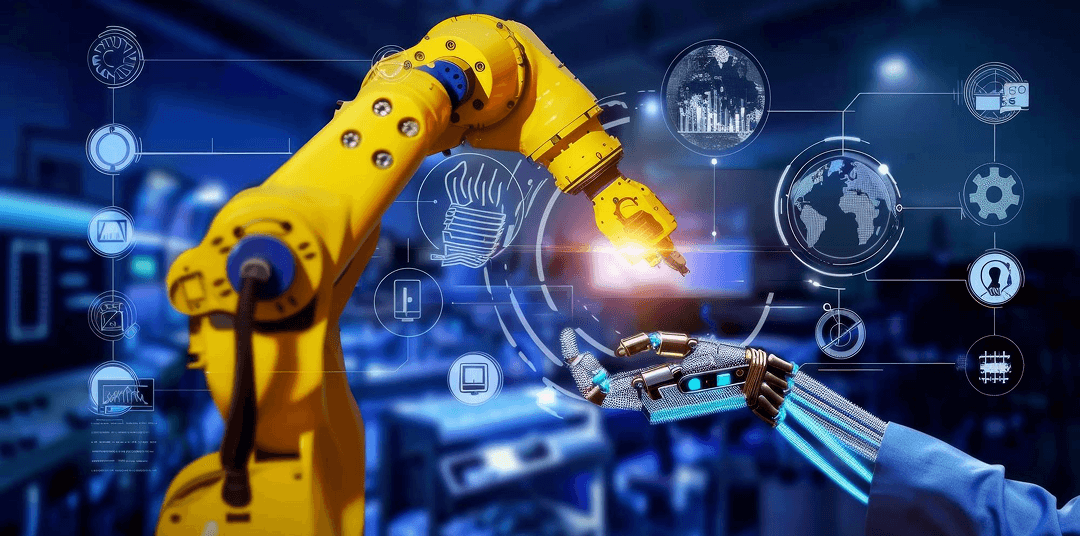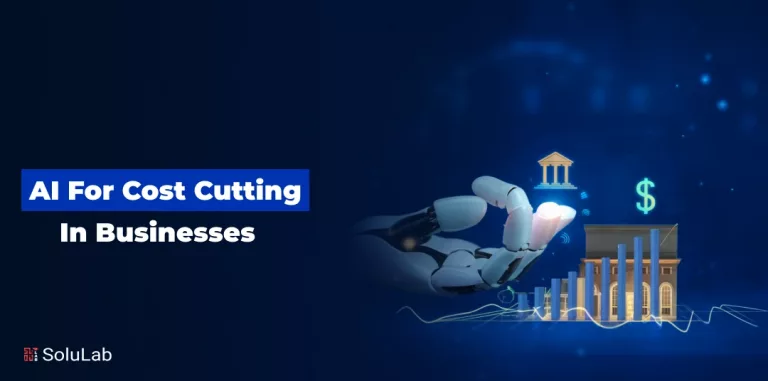
While Advanced Process Control (APC) represents a significant enhancement to standard Basic Process Control Systems (BPCS), industry continues to advance to progressively sophisticated systems of intelligent control and supervision. On a footing extending and enriching basic concepts of model predictive control (MPC), multivariable optimization, and real-time data incorporation that characterize systems of APC, state-of-the-art intelligent production spaces synthesize artificial intelligence, machine learning, digital twins, and predictive analytics to enable self-optimizing, autonomous production systems beyond standard bounds of process control.
These advanced production systems employ cutting-edge technologies like predictive maintenance programming, digital twin technology, artificial intelligence-driven process improvement, real-time sensor fusion, and edge computing architectures to achieve previously unrivaled levels of production efficiency, quality control, and adaptive response to changing production demands.
Predictive Maintenance and Condition-Based Monitoring Systems
Principles of Predictive Maintenance Technology
Predictive maintenance (PdM) represents a shift from reactive and preventive maintenance practices toward data-driven, proactive maintenance of equipment. Unlike conventional maintenance practices involving maintenance based on pre-determined schedules or reactive repair of failure events, predictive maintenance involves employing machine learning techniques and real-time sensor data to make predictions of equipment failure before it occurs and enables optimal maintenance timing and resource utilization.
The fundamentals of predictive maintenance systems are continuous monitoring of equipment condition by sophisticated networks of sensors that detect vibration, temperature, pressure, acoustic emission, and other important parameters. These systems apply sophisticated analytics and AI-based algorithms to identify data gathered for patterns and anomalies and establish baseline equipment behavior while spotting deviation reflective of possible failure.
Current predictive maintenance systems employ Internet of Things (IoT) sensors integrated throughout production machinery to build comprehensive tracking networks. IoT sensors continuously collect operating information, which is fed into machine learning scripts that are trained on historically failed profiles and device activity to build predictable failure predictions and maintenance recommendations.
Machine Learning Techniques for Predictive Analytics
The integration of machine learning techniques with predictive maintenance systems has revolutionized failure prediction ability’s precision and efficacy. Algorithms based on supervised learning trained on labeled data sets of equipment failure can identify specific failure modes and infer their likeliness accurately. These models are trained on historical maintenance records, failure records, and working parameters to extract correlations between equipment states and failure probability.
The unsupervised learning technique is particularly effective in predictive maintenance applications when failure modes are not well-defined or when discovery of new types of anomalies is called for. These types of algorithms can identify anomalous operating regimes and erratic equipment behavior that may foreshadow trouble, even if no information of specific failure modes is available in advance. Deep learning techniques have been exceptional in dealing with high-dimensional complex sensor data and discovering fine-level regimes that may escape traditional analysis techniques.
An intriguing example of implementation was that of a Mondi producer, who was successful in implementing predictive maintenance systems on their plastic extruder machines and save cost by €50,000 to €80,000 by saving on operating costs and minimizing waste production. System’s prediction of abnormal shutdowns before actual shutdowns resulted led to witnessing real cost benefits of new predictive maintenance technologies.
Condition-Based Maintenance Systems
Condition-based maintenance (CBM) systems are a sophisticated kind of equipment maintenance in which real-time condition of equipment is utilized to determine best maintenance timing. In contrast to schedule-based maintenance following pre-determined time periods, CBM systems monitor equipment health continuously by observing sensor signals and call for maintenance work merely when specific condition thresholds are violated.
Existing CBM applications incorporate Industrial IoT (IIoT) sensors providing 24/7 coverage of principal equipment parameters. These systems employ advanced signal processing to observe vibration signature, thermal activity, outcomes of oil analysis, and acoustic emission to derive equipment condition. Inclusions of artificial intelligence methodologies enable these systems to learn owing to experience and increasingly expand their predictive capability.
The effectiveness of condition-based maintenance systems is evidenced by their ability to reduce unplanned downtime by up to 50%, maximize equipment life, and optimize maintenance resource allocation. These systems provide maintenance teams with valuable information about equipment condition and enable proactive maintenance decisions to avoid disasters and reduce production disruptions.
Digital Twin Technology and Virtual Process Modeling
Implementation and Architecture of Digital Twins
The digital twin technology creates digital replicas of physical production facilities and production processes in real time as data-driven dynamic models for analysis, monitoring, and optimization. These advanced digital replicas of physical products integrate real-time sensor data and advanced simulation capability to have unprecedented knowledge of production processes and build predictive insights to drive operational excellence.
Its production digital twin architecture comprises a number of layers of abstraction, from component twins that focus on specific machines to system twins that emulate complete production lines. These digital equivalents stay in sync with their physical counterparts by virtue of IoT networks of sensors tracking real-time values of operating variables, performance parameters, and environmental conditions.
Today’s digital twin solutions use advanced technologies like multimodel fusion processes, machine learning processes, and infrastructure based on cloud computing to create comprehensive virtual spaces accurately mirroring advanced systems of manufacture. These systems enable industry stakeholders to model different situations, predict outcomes, and test optimization scenarios while maintaining physical production activity.
Uses in Optimizing Manufacturing Processes
Digital twin technology has extensively been applied in different industries of manufacture, and its uses have been evident in offering real benefits in optimizing processes, quality control, and plant efficiency. In semiconductor manufacture, digital twins help control complex fabrication processes effectively to obtain uniform quality products and minimize wastages and defects. Digital twins are utilized by automakers to optimize production assembly lines, forecast plant maintenance requirements, and improve plant equipment productivity.
The energy industry has been successful in deploying digital twins for predictive maintenance purposes, and organizations like ENGIE Lab CRIGEN have made use of such technologies as a means of hastening zero-carbon energy transitions. Like Kärcher, which uses digital twin technology to emulate various battery cells and housing materials in real applications and facilitates data-centric product development choices.
The other remarkable use is aerospace production, whereby digital twins allow comprehensive monitoring of production processes, so that producers can schedule production more effectively, simulate new product introductions, and predict equipment failure. These applications demonstrate how the technology can transform typical reactive systems of manufacture into proactive data-driven systems that anticipate and avert difficulties before actual production disruptions occur.
Integrating with Real-Time Analytics of Data
The effectiveness of digital twin technology is to a large extent dependent on its connectivity with real-time data analytics systems that are capable of processing and analyzing immense volumes of sensor data in real time. Applications in current times use cloud computing infrastructure to provide the computational resources necessary for complex simulations and real-time production process analysis.
The integration of edge computing lies at the heart of digital twin architecture as a means of enabling real-time data processing at its sources to reduce latency and achieve high system responsiveness. This type of distributed computing enables digital twins to react instantly to changing conditions on the production shop floor while also maintaining permanent congruity between digital and physical twins.
Sophisticated digital twin systems incorporate artificial intelligence and machine learning aspects in order to enhance their prediction capacity and self-decision-making capability. These systems can automatically change process parameters, identify quality issues, and optimize resource use based on real-time and past performance trends of actual plant operations
Artificial Intelligence and Machine Learning in Process Control
Neural Networks for Industrial Automation
The integration of deep learning and neural network technology into industrial automation systems has revolutionized process control functions and enabled more sophisticated and responsive production processes. Neural networks have a special appropriateness in pattern recognition, modeling nonlinear systems, and high-level decision-making roles for which traditional control algorithms are unsuitable.
Deep learning-based techniques have been particularly effective in industrial automation applications wherein high-dimension sensor data can be processed, complex patterns can be identified, and control decisions can be made in real time. These systems can learn from experience data and continuously improve their performance as well as adapt to different manufacturing conditions with minimal reprogramming.
Current industry applications of neural networks range as widely as quality control and defect detection to predictive maintenance and process optimization. These systems’ abilities to accommodate uncertainty and non-linear relations make them ideal for high-complexity production scenarios wherein traditional control techniques would not adequately perform.
Adaptive Control Systems and Real-Time Optimization
Adaptive control systems represent a significant breakthrough in automation of manufacture by providing a means of automatically changing control parameters as system conditions vary. Intelligent systems automatically observe current process performance and vary their control strategies automatically to achieve optimum performance regardless of variations in equipment performance, ambient conditions, or production requirements.
The underlying principle of adaptive control is in real-time identification of systems and dynamic adaptation of parameters. Adaptive systems employ machine learning methods to acquire system behavioral patterns and adapt control parameters automatically for optimum performance criteria such as quality, throughput, and energy efficiency.
Model Reference Adaptive Systems (MRAS) and Self-Tuning Regulators (STR) are two of the key techniques of implementing adaptive control. MRAS systems entail employing reference models to guide control parameter variations, while STR systems use online identification schemes to continuously adapt system models and control parameters based on real-time system performance data.
Artificial Intelligence-Induced Process Optimization
Process optimization based on artificial intelligence applies advanced algorithms and machine learning to identify areas of poor efficiency, predict optimal operating modes, and implement process improvements automatically. These systems can sift through massive amounts of operating data to identify hidden patterns and correlations that escape human operators and can be used to achieve significant improvements in manufacturing productivity.
Process optimization systems using artificial intelligence implement different techniques like machine learning, computer vision, and natural language processing for enhancing production activity. These technologies enable real-time monitoring of processes, detecting anomalies, and prediction-based optimization, which can enhance productivity and quality of products drastically.
The case in point here is C3 AI Process Optimization, which combines process control systems and advanced predictive optimization techniques to develop real-time setpoint recommendations. This system showcases how AI can collaborate with multiple data sources, employ dynamic modeling techniques, and deliver information that is useful and improves manufacturing outcomes while reducing costs of operation.
Future Directions and Emerging Technologies
Integration of AI and Edge Computing
The convergence of artificial intelligence with edge computing architectures represents a transformative trend in intelligent manufacturing systems. Edge AI implementations enable real-time decision-making and autonomous control at the point of data generation, reducing latency and improving system responsiveness while maintaining privacy and security for sensitive manufacturing data.
Distributed intelligence architectures combine local processing capabilities with cloud-based analytics to create hybrid systems that leverage the benefits of both approaches. These implementations enable immediate response to critical conditions while maintaining comprehensive data integration and long-term analytical capabilities.
Future developments in edge AI technology will likely focus on improved energy efficiency, enhanced processing capabilities, and more sophisticated autonomous decision-making. These advancements will enable deployment of increasingly intelligent manufacturing systems in resource-constrained environments while maintaining high performance and reliability standards.
Autonomous Manufacturing Systems
The evolution toward fully autonomous manufacturing systems represents the ultimate goal of intelligent manufacturing development, where AI-driven systems can manage entire production operations with minimal human intervention. These systems will integrate advanced robotics, AI decision-making, predictive analytics, and autonomous quality control to create self-managing production environments.
Autonomous manufacturing implementations will require sophisticated coordination mechanisms that can manage complex interactions between multiple robotic systems, optimize resource utilization, and adapt to changing production requirements in real-time. Machine learning algorithms will play crucial roles in enabling these systems to learn from experience and continuously improve their performance.
The transition to autonomous manufacturing will necessitate new approaches to safety, security, and human oversight that ensure reliable operation while maintaining appropriate levels of human control and intervention capability. Hybrid human-AI management models will likely emerge as intermediate steps toward fully autonomous systems, combining human expertise with AI capabilities to achieve optimal performance.




